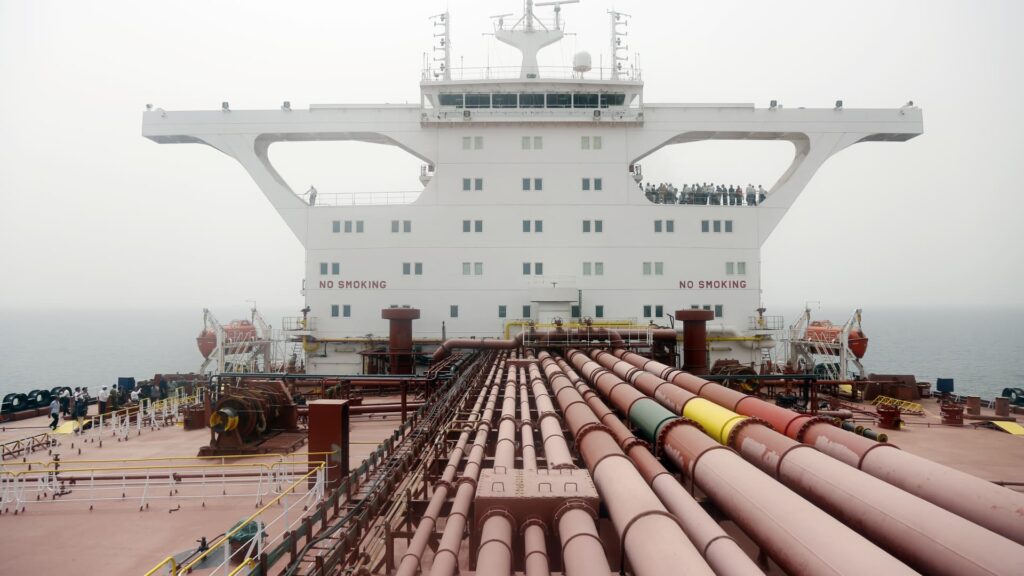An oil tanker on arrival to Al Hudaydah port in the Red Sea on July 17, 2023 in Hudaydah, Yemen. (Photo by Mohammed Hamoud/Getty Images)
Mohammed Hamoud | Getty Images News | Getty Images
Energy prices for Europe are expected to increase as more petroleum products and crude tankers are diverting away from the Rea Sea and Suez Canal. Longer trips for the Middle-Eastern barrels that replaced Russian flows to Europe introduce supply issues, and this is leading to a “sea change” in commodity purchases by Europe, and a boost for Atlantic Basin crude suppliers including the U.S. and Brazil.
According to global trade intelligence company Kpler, at least six crude tankers are currently taking the much longer route around Africa’s Cape of Good Hope rather than the Suez Canal, a diversion caused by the Houthi rebel attacks and which can add up to 45 days to the voyage.
Europe is at the center of the diversions because its tanker supplies are at high risk of attack.
“The decision for these diversions is by the owners of the oil, which is European,” said Viktor Katona, lead crude analyst at Kpler. “European countries are seen as complicit in the Israel-Hamas war. They would rather go around the Cape of Good Hope versus taking a chance through the Red Sea.”
The resulting delays to the delivery of products — which include crude, diesel, and LNG products — vary based on the commodity being carried. LNG vessels travel faster than oil tankers because they are lighter and they can sail up to 21 knots versus the 12-13 knots for crude tankers.
Before the Red Sea disruptions, a tanker from Jamnagar, India to Rotterdam, Netherlands would have taken 24 days. Sailing through the Cape of Good Hope, the duration of the same voyage has risen to 42 days. From Basrah, Iraq, to Milazzo, Sicily, a voyage that would have taken 17 days will now take 42 days.
The longer transits can put a squeeze on the availability of tankers, with their return journey to be loaded up with product longer.
“It’s not…
Read the full article here





